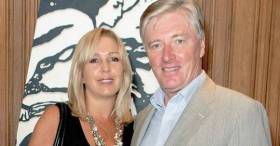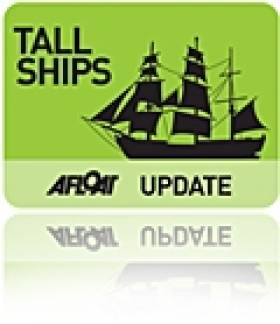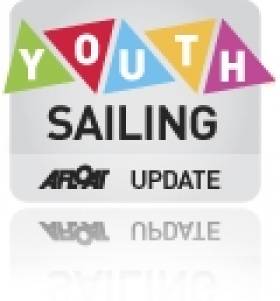Displaying items by tag: donation
Inver Colpa Rowing Club Donate Skipathon Proceeds to Drogheda Women’s and Children’s Refuge
On Saturday 23rd July 2022, Inver Colpa Coastal Rowing Club hosted a 12 Hour Charity Skipathon in Scotch Hall Shopping Centre to raise much-needed funds for both Drogheda Women’s and Children’s Refuge Centre and Inver Colpa Coastal Rowing Club.
The club were delighted to meet again last Saturday in Scotch Hall to present the Drogheda Women’s and Children’s Refuge Centre with a cheque for €2,655.
Club Secretary Glenda Murphy stated:
‘We are thrilled with the amount that we have raised both for the club and for such an important charity like the Drogheda Women’s and Children’s Refuge Centre. We really have to thank all the skippers for their dedication and determination on the day and in their training beforehand, along with Sean Kilroy Fitness & St. Nicholas G.F.C., especially chairman Dessie McDonald, for all their help! We would also like to thank Scotch Hall for hosting the Skipathon, along with everyone who donated, Gillian Marry and Lisa Devlin for the food and Brian Millan for the leg rubs during what was a real test of endurance for our skippers’.
It’s an exciting time for the club as they train for two upcoming races in Skerries and Islandmagee over the next few weeks. Ongoing thanks as always is due to the club’s sponsors - Flo Gas, KC Shipping, EBS Bank, Premium Pellets and helpmypension.ie
Donation by Port of Cork Marks Significant Maritime Art Collection to Crawford Gallery
The Port of Cork Company's donation of maritime artworks and historical pieces to the Crawford Art Gallery in Cork is a further boost to the city's art collection, writes the Irish Examiner.
As well as significant paintings of the port and its surrounds through the ages, the donation also includes a Ship’s Register from the Cork Harbour Commissioners, recording the visit of the Titanic, and mentioning the Lusitania.
The Port of Cork organisation, which is currently housed in the city's Custom House, is expected to move to Ringaskiddy as part of the major development of facilities closer to the mouth of the harbour. Plans have already been approved for the creation of a 34-storey hotel – potentially Ireland's tallest building – at the site of the Custom House, albeit with conditions around the preservation of aspects of the original building.
Among the 17 maritime paintings making their way across the city to the Crawford are 11 works by Cobh artist George Mounsey Wheatley Atkinson, whose iconic Paddle Steamer Entering the Port of Cork already forms part of the gallery's collection. A former ship's carpenter, the 19th Century resident of what was then Queenstown is renowned for providing insight into the ships of the era. The Crawford plans to exhibit the newly acquired pieces alongside other maritime pieces in its collection.
Also included in the Port of Cork donation are pieces by Mallow artist Henry Albert Hartland, famous for his watercolours and landscapes, skills he would have honed in the Crawford building during its early incarnation as Cork School of Art. Indeed, before it became associated with art, the Crawford building served as the city's Custom House before those functions transferred to the current Port of Cork premises.
Click here for further reading of the port's donation to the city's culture.
Broadcaster Pat Kenny Vows to Make 'A Good Donation' to Help Fund Fight Against Bulloch Harbour
Broadcaster Pat Kenny has confirmed he'll financially support Dalkey residents in their challenge against a mixed-use development for Bulloch Harbour.
In recent days, householders around Dalkey have received a newsletter asking residents to contribute to a fund-raising initiative.
This is aimed at raising sufficient funds to launch a High Court judicial review of June’s An Bord Pleanála ruling.
Yesterday Dalkey resident Mr Kenny said that he intends to make “a good donation” to the fund-raising effort by the Bulloch Harbour Preservation Association.
“Everyone is being asked to chip in to get the process going,” he said.
“I am no legal expert, but it was a wrong-headed decision made to grant planning permission and it has to be stopped.
For further reading on the development click here
Howth Coast Guard To Host Philippines Clothing Donation Drive
#Philippines - Howth Coast Guard will be hosting a donation drive for clothing and other items needed by people in the Ajuy area of the Philippines currently recovering from the recent Typhoon Haiyan disaster.
The coastguard station on the West Pier in Howth will be open this Saturday 23 November from 12pm to 2pm to take in light clothes such as shorts and T-shirts that are suitable for the warm climate in the Philippines.
Light bed linen and towels will also be accepted, and donors are asked to roll their items as tightly as they can into a bag so that the courier boxes can be filled as much as possible.
Corrib Anglers Donate to Rescue Boat
#ANGLING - Days after the tragic death of an angler on Lough Corrib, as previously reported on Afloat.ie, the Collinamuck Angling Club will donate €5 from every entry in the upcoming open wet fly competition on 22 April to the Corrib Mask rescue boat.
"The important work that is carried out by the volunteers of the Corrib Mask rescue boat is sometimes forgotted by us anglers," the club's Lionel Flanagan told the Galway Advertiser at the launch of this year's contest.
"We hope this small token will help the Corrib Mask rescue boat continue to provide this vital resource to Connacht anglers and visitors alike.”
The yacht once owned by the late former Taoiseach Charles Haughey will be only Irish entrant in the Tall Ships Races at Waterford later this month.
The Irish Times reports that Celtic Mist will take part in the first leg of the race to Greenock in Scotland before it is fitted out for its new life as a research vessel for the Irish Whale and Dolphin Group.
The IWDG's Simon Berrow confirmed that it has accepted the Haughey family's offer of the yacht as a gift to support its study and conservation of whales, dolphins and porpoise in Irish waters.
He said the group first had to explore the feasibility of running such a large vessel before it could accept the "very generous offer".
The Irish Times has more on the story HERE.


































































